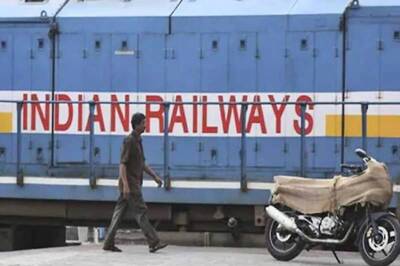
views
Voters overwhelmingly reposed faith in the BJP, scripting a convincing win for the Modi-Yogi ‘double engine’ in Uttar Pradesh and validating ‘Modi magic’ in Uttarakhand, Manipur and Goa. The Congress suffered its worst setback since 2019, buried under the AAP avalanche in Punjab.
Yogi Adityanath has emerged as the new hero figure of the right, and Arvind Kejriwal willy-nilly of the centre-left, with significant implications for national politics.
The historic triumph in Uttar Pradesh, which has returned a party to power for the first time since 1985, ratifies the Modi-Yogi formula of welfarism and development, charismatic leadership and polarising rhetoric, caste arithmetic and muscular governance. Together, they trumped anti-incumbency and stopped a resurgent Samajwadi Party in its tracks.
Yogi is now the BJP’s most powerful chief minister, the King in the North, which raises the intriguing question of the party’s succession plan and his status as de facto number two. He will certainly exercise influence over party affairs, notably the presidential elections later this year, in which UP carries more weight than West Bengal and Tamil Nadu combined.
That the credit for UP goes to him in large measure is beyond doubt. Certainly, implementation of welfare schemes played an important role, cutting across ascriptive identities. An able administrator, he has focused on creating conditions conducive to investment, by ramping up infrastructure and stamping out organised crime.
On the other hand, he has brought in controversial legislations on population stabilisation and ‘love jihad’. But voters are clearly unfazed by the mix of progressive and regressive. His biggest challenge now will be to deliver on Prime Minister Narendra Modi’s promise to tackle the stray cattle menace.
It is too early to ask if Yogi will be pitched as Modi’s successor. That depends on several variables, notably his ability to carry the Sangh Parivar, make the crucial shift from right to centre-right and rebrand himself in a pan-Indian context.
For the moment, Prime Minister Narendra Modi appears indispensable. On the day before polling, he predicted a wave in favour of the BJP and lo and behold, he was proved correct – everywhere except Punjab, where the party has minimal stakes.
In Punjab, the urge to purge politics-as-usual propelled disruptor-in-chief Arvind Kejriwal to victory. It was the perfect electoral storm – an angry electorate, an economic crisis, a divided Congress and a charismatic leader. This profoundly changes the terrain for the Congress, which arguably shot itself in the foot in both Uttarakhand and Punjab.
Massive infighting within the Uttarakhand Congress, coupled with the cult status that Modi enjoys in ‘Devbhoomi’, countered strong anti-incumbency. The promise of a new land protection law and a Uniform Civil Code, in the backdrop of growing apprehension over the significant influx of minorities, also helped buoy the BJP.
The Punjab Congress paid the price for factional feuds, but the extent of AAP’s victory argues a profound disgust with all the established players. The failure of successive governments to tackle unemployment and rural distress led to the inexorable slide of a once-prosperous state. So, voters have punished not just the Congress, but the Akali Dal and Captain Amarinder Singh as well.
In winning Punjab, AAP has established that it can serve as an alternative to the Congress. It is young and nimble-footed, and has the ability to adapt and learn from its mistakes. By contrast, the Congress is inertial and antiquated, lumbering from one setback to the next. Time and again, it has proved incapable of course-correction.
Priyanka Vadra, the great white hope of the Congress, has failed to stem the decline in UP, despite a high-voltage campaign and intense effort – once again underlining the need to remake the Congress under new leadership.
AAP faces its biggest challenge yet. It represents the ‘hope factor’ and from the very outset, will carry an enormous burden of expectations. Managing a state neck deep in debt, with an economy heavily dependent on agricultural subsidies, poses a formidable challenge for both Kejriwal and chief ministerial nominee Bhagwant Mann.
Succeeding in Punjab is critical to AAP’s future. Too important, in fact, to be left to the CM alone. Managing its many contradictions will need all manner of interventions and inputs. Kejriwal, expert in crowdsourcing solutions, is likely to hold the reins.
As an urban party, AAP has not faced the kind of financial and developmental constraints it will encounter in Punjab. While the electorate hopes for transformational governance, any attempt at agricultural reform will invite a strong backlash from the very farmers who have voted for the party.
But if there’s one thing AAP has learnt from the BJP, it’s how to leverage the incumbency advantage.
Bhavdeep Kang is a freelance writer and author of Gurus: Stories of India’s Leading Babas and Just Transferred: The Untold Story of Ashok Khemka. The views expressed in this article are those of the author and do not represent the stand of this publication.
Read all the Latest Opinion News and Breaking News here
















Comments
0 comment